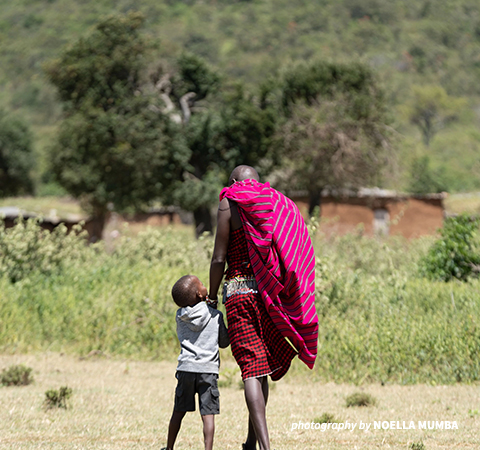COP15: Leaders across all sectors must deliver for nature and for people

Africa is reportedly losing between USD $7 billion and USD $15 billion annually as a result of climate change and biodiversity loss.
Africa is bearing the heaviest brunt of climate change and biodiversity loss. Currently, East African nations are facing the worst drought in decades, and it is estimated that at least 36.1 million people will be affected by severe drought in the Horn of Africa alone. Additionally, a recent U.N. World Food Program situation report indicates that above-average rainfall and devastating flooding have affected five million people this year in 19 countries across West and Central Africa, and the numbers are set to swell. All the same, the Northern African region has been facing extremely high climate change pressures with a very high risk of some regions being rendered completely unlivable and reducing growing areas for agriculture. Unfortunately, the narrative in the South is no different.
For eons, experts have emphasized that Africa’s natural capital underpins the continent’s development aspirations and significantly contributes to global goals for addressing climate change, biodiversity loss, and desertification. As host to about a quarter of the global biodiversity, Africa’s natural ecosystems continue to contribute significantly economically, socially, and culturally to the human species. The continued degradation of these ecosystems threatens the well-being of the entire world and the human species in general. And while these systems are at a tipping point, there is hope. Hope that needs to be translated into action, for Africa and by Africa.
“The global Conference of Parties have been exploring the big questions of what parts of nature we need to protect, and each has a slightly different lens—protecting nature, regulating use of nature, and defining areas of natural infrastructure that contribute to global climate stabilization. Fundamentally, they all need conservation as a regulating mechanism, and global leaders must work alongside local communities and the private sector to scale up these initiatives in order to meet these ambitious yet necessary targets,” His Excellency Hailemariam Desalegn, the Former Prime Minister of Ethiopia and the A-PACT Steering Committee Co-Chair, says.
Africa is reportedly losing between USD $7 billion and USD $15 billion annually as a result of climate change and biodiversity loss. If the status quo persists, the numbers are set to increase to USD $50 billion a year by 2030. The implications of this to the rest of the global systems need not be reemphasized. By 2030, Africa will need approximately USD $1.3 to USD $1.6 trillion to tackle climate change, and the cost of inaction is insurmountable as the effects accelerate. So how do we quickly and sustainably close the climate and biodiversity financing gap?

As host to about a quarter of the global biodiversity, Africa’s natural ecosystems continue to contribute significantly economically, socially, and culturally to the human species.
There is sufficient capital looking for yield in the finance markets. The challenge is to match this funding with green projects that deliver for people and nature. There is a need to widen the investor base and instruments through which climate and biodiversity financing can flow. Area experts are also looking into how best to de-risk conservation financing through blended financing, setting in place financing policies that will create a conducive environment to draw in these resources, and investing in climate information architecture to strengthen investment decisions.
“Steps are being taken by leaders across the continent to find home-grown solutions and investments to address the climate change crisis. For Africa, climate change and biodiversity conservation are a matter of survival. The investments required remain scarce but Africa is ready to take leadership in tackling this global issue by shifting the thinking around how investments are structured in a bid to draw in more financing and more specifically, private sector financing,” H.E. Hailemariam shared at a plenary discussion at COP27 on Sustainable Finance Mechanisms.
It is imperative to note that financial institutions across the continent are actively working to scale up private climate and biodiversity finance, which is commendable. For example, we are seeing a rise in the number of climate mitigation and adaptation projects they are investing in and how several are going the extra mile to provide incentives through an increased base for risk absorption.
Presently, only a fraction of protected and conserved areas across Africa have access to sufficient and sustained financing. The formation of a hybrid fund called A Pan African Conservation Trust Fund (A-PACT) offers a practical example of African leadership in this space. Africa has come together in a bid to pool resources for the network of over 8,600 protected and conserved areas through the proposed fund. It seeks to expand coverage across the entire system and to build a shared responsibility among protected area leadership on the continent. This in turn will create incentives for accountability and transparency, and will inevitably align with the pan-African development aspirations set out in the A.U. Agenda 2063.
Looking ahead, Africa is actively reconsidering how growth is defined, mapped, and planned in pursuing development that mitigates climate and biodiversity threats and centers people at the core. Across the continent, development blueprints continue to mainstream conservation and the environment into national planning processes. As we head to the final installment of the Multilateral Environmental Agreement Meetings, the 15th Conference of Parties of the Convention on Biological Diversity (CBD COP15), Africa must show its leadership in the space with solutions that deliver both for its people and nature, as the world’s survival rests on Africa.